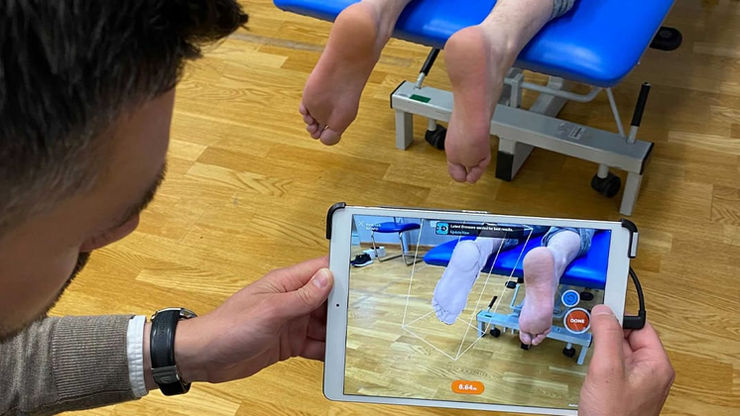3D Scanning and Printing Technologies in Prosthetics and Orthotics

3D Printed prosthetic and orthotic technology is becoming more accessible within the industry. The technology can improve the lives of those reliant on prosthetic limbs, and there’s noticeably been an interest in adapted orthopaedic insoles.
What is the process in 3d scanning in Prosthetics and Orthotics?
There are several workflows on offer that allow a 3D printed product to be produced for prosthetic and orthotic clients.

The ability to scan everyone is not yet realistic. One of the main difficulties is scanning children who are less likely to keep still. In other instances, positioning the limb in the desired position is easier to do with hands on the patient.
Therefore, some processes start with casting and rectification and a scan is taken of the rectified model and sent for modelling before printing and finishing. There are several platforms available that help to position the patient so that scanning is easier.
By scanning the patient directly, you instantly remove the time taken to cast and rectify. The scanned model can be modified and aligned before modelling in CAD, printing and finishing.By scanning the patient directly, you instantly remove the time taken to cast and rectify. The scanned model can be modified and aligned before modelling in CAD, printing and finishing.
The concept that Invent Medical have pioneered is to make this process as short as possible. The power of modifying, aligning and modelling is inside the app. Therefore, it takes minutes to scan and order a custom 3D printed product.
The printing process takes around 24 hours and is then cooled for the same length of time. Once cool, the orthoses are removed and the post processing begins to remove excess powder and often dyed or painted.
Printing requires less manual input to manufacture turnaround times at present are already quicker than traditional methods.

What are the benefits for clinicians?
A faster workflow saving time in clinic. Like all new things the initial change to scanning takes some time to learn and develop the skill. Scanning removes the need to send casts to labs and gets them instantly.
Printing gives accuracy of 99.7%, including repeat orders.
3D printing has allowed orthoses to be designed with variable flexibility in the same device. Therefore, orthoses can be lighter and lower profile making them easier to accommodate.
From an environmental stand point there is considerably less wasted with these processes.
What are the barriers?
The number one barrier is the initial investment to purchase an iPad and structure sensor to be able to start the digital journey. However, it is inevitable that smart phone cameras will be doing this effectively as well.
Change within clinics can be challenging, however, it does not mean 3D printing will replace traditional methods. With the rapid advancement within the printing process and the amount of new P&O companies emerging with digital platforms and offering 3D printed P&O products this is here to stay.